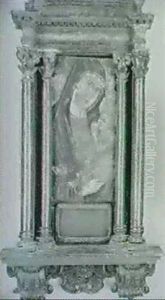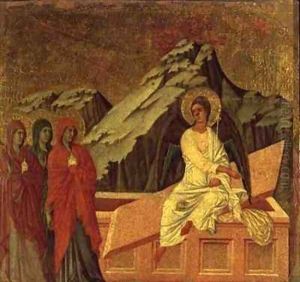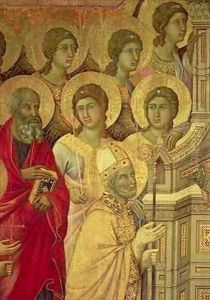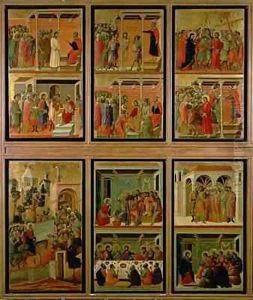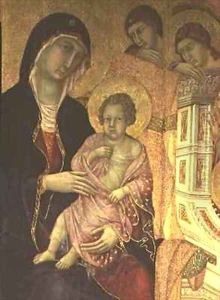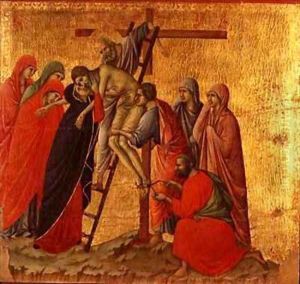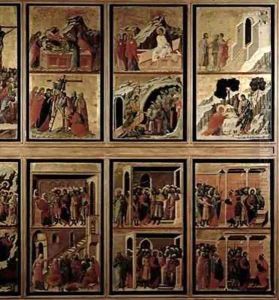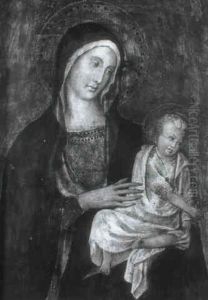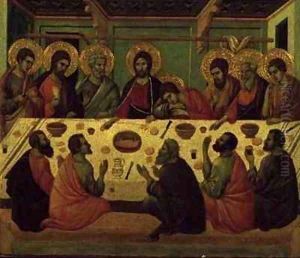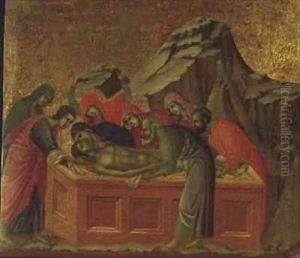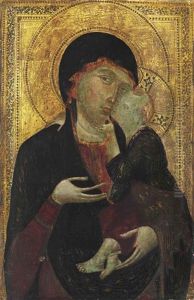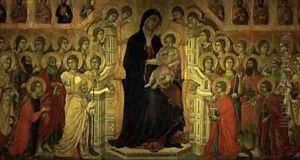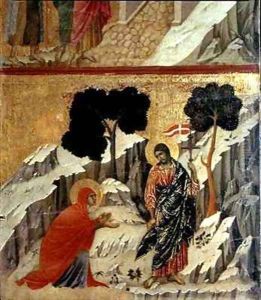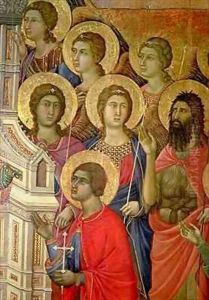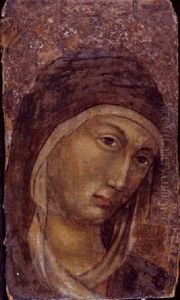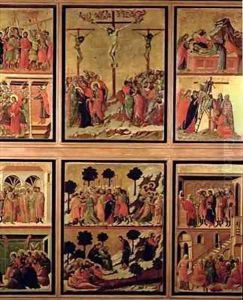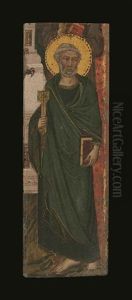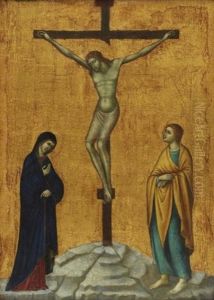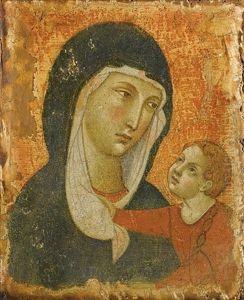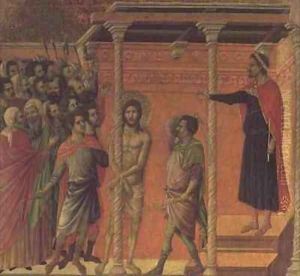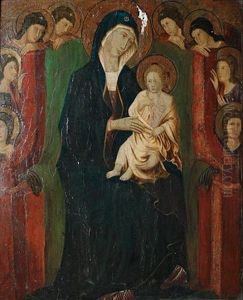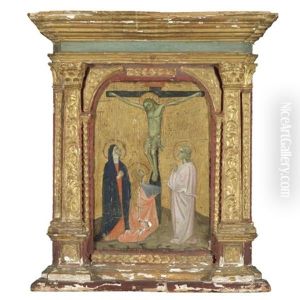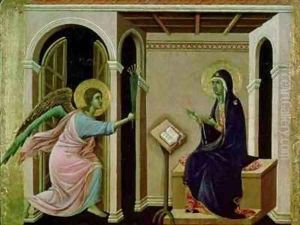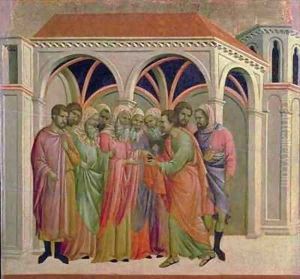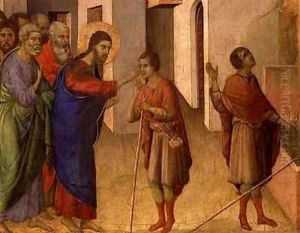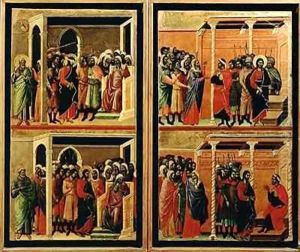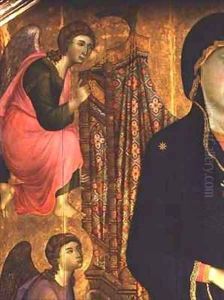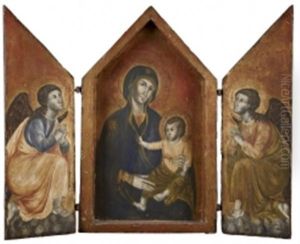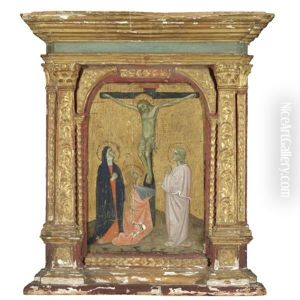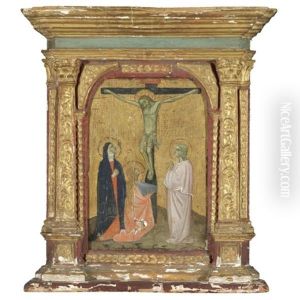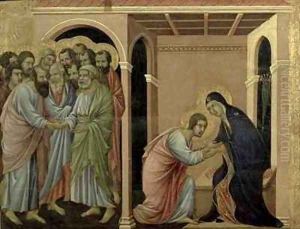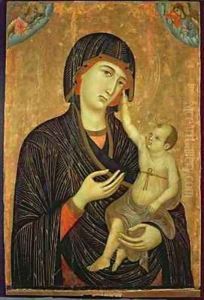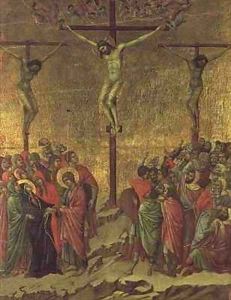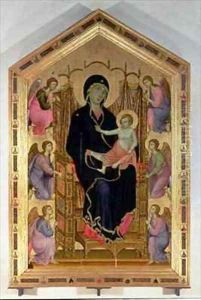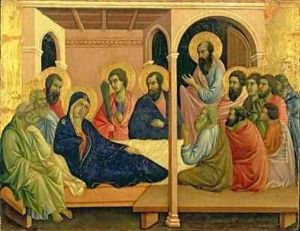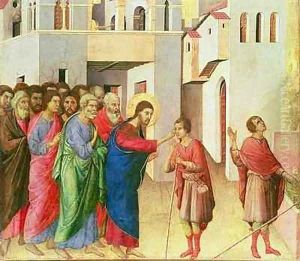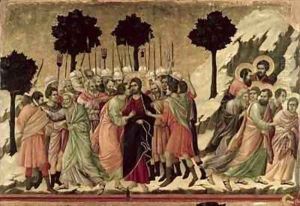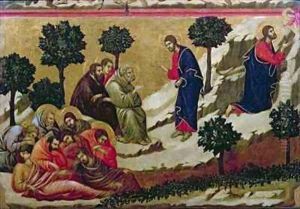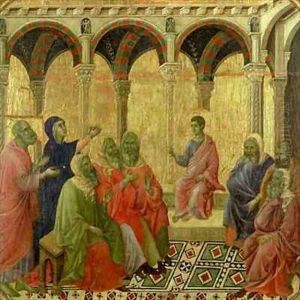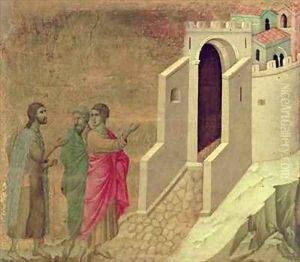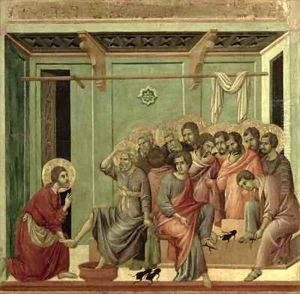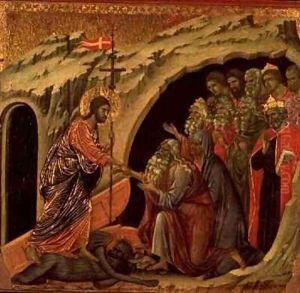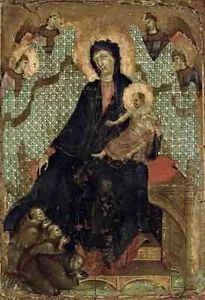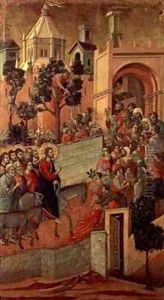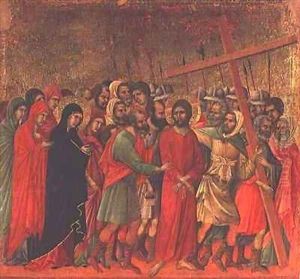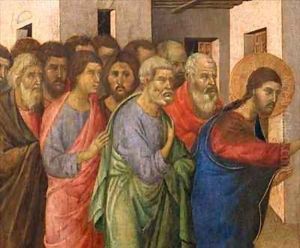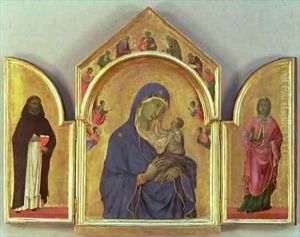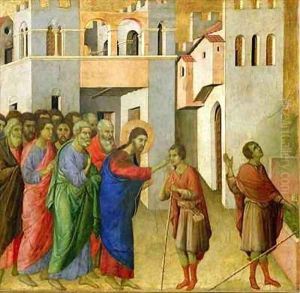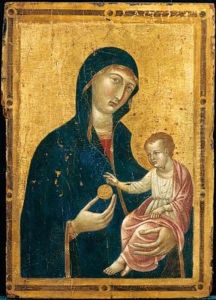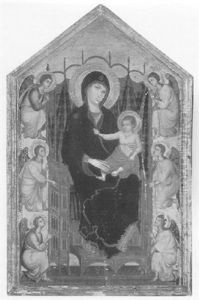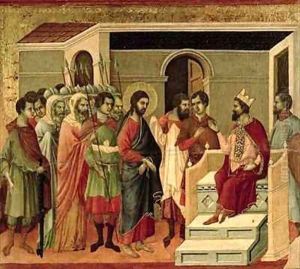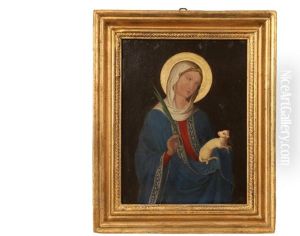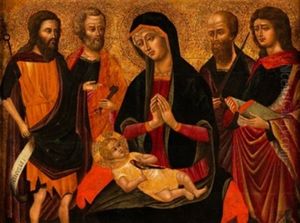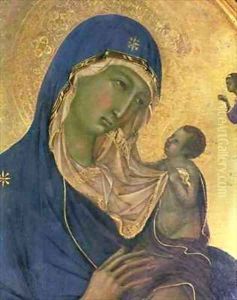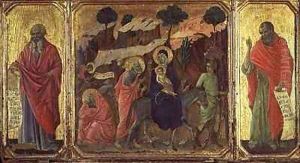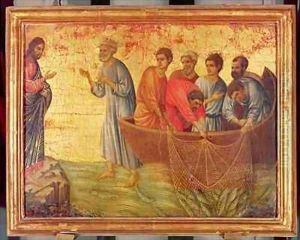Buoninsegna Duccio di Paintings
Duccio di Buoninsegna, often known simply as Duccio, was an Italian painter active during the late 13th and early 14th centuries. He is considered one of the greatest and most influential figures in Sienese painting and a key contributor to the development of the Italian Gothic style. Duccio's work is characterized by its complex compositions, delicate features, and rich color palette, which signaled a shift from the Byzantine art style that dominated the period towards a more naturalistic approach.
Duccio was born in Siena, a city in Tuscany that was, during his lifetime, a vibrant center of arts rivaling Florence. Little is known for certain about his early life or training. His first recorded work dates to 1278, and from then on, he became a prominent figure in the Sienese art scene. He was influenced by the Byzantine style, but he began to incorporate more realistic figures and settings into his work, which was a departure from the flat, gold-background compositions that were typical of the time.
The artist's masterwork is the Maestà, an altarpiece for the Siena Cathedral, completed in 1311. This double-sided panel features a large enthroned Madonna and Child on the front and a complex series of scenes from the life of Christ on the back. The Maestà is celebrated for its elegance, its narrative clarity, and its emotional expressions, which were innovative at the time. This work solidified Duccio's reputation and had a significant impact on the Sienese School of painting, influencing artists such as Simone Martini and the brothers Ambrogio and Pietro Lorenzetti.
Apart from the Maestà, Duccio's oeuvre includes several other important works, such as the 'Rucellai Madonna' (now in the Uffizi Gallery in Florence) and the 'Stoclet Madonna'. His style is marked by graceful lines, a new attention to spatial depth, and a softening of the strict iconography that had characterized Christian art, all of which contributed to the evolving visual language of the Italian Renaissance that was emerging in Tuscany.
Duccio's exact date of death is not known, but it is believed that he died in Siena between 1318 and 1319. Despite the lack of extensive written records about his life, Duccio di Buoninsegna remains a pivotal figure in the history of Western art. His innovations laid the groundwork for future generations of artists, and his works continue to be admired for their beauty and historical importance.
